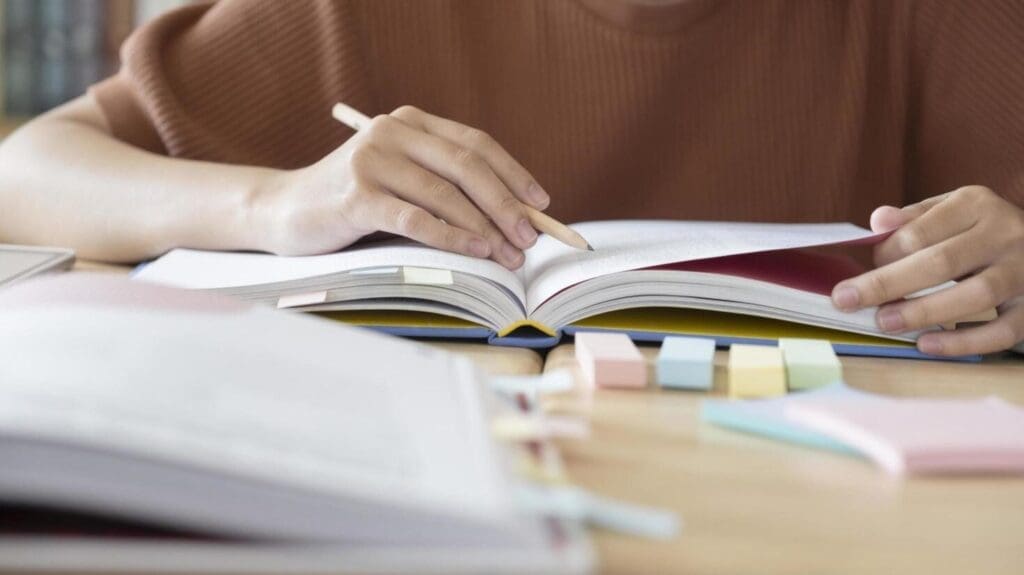A Story of Assessments in Action

Imagine this: a teacher hands back a math quiz, and instead of just looking at the grade, a student studies the questions they missed. The student realizes they misunderstood fractions, so the teacher gives them extra practice on that skill. A week later, the student tries again and finally understands. That is the power of classroom assessments—not just giving a grade, but helping students see where they are and how to grow.
Assessments are not meant to scare students or make them feel judged. They are tools that show what has been learned and what still needs practice. A classroom without assessments would be like a basketball team playing without a scoreboard. Players wouldn’t know if they were winning or what to improve on. Assessments give students feedback so they can track progress and make learning more personal.
Research shows that assessments really do help learning. According to the National Council of Teachers of Mathematics (NCTM), students who receive regular feedback through assessments perform better than those who only take final exams (NCTM, 2021). Another study published in the Harvard Education Review found that formative assessments, like short quizzes or check-ins, improve student learning outcomes by up to 24% (Harvard Education Review, 2018).
Here’s a quick look at how assessments help:
| Type of Assessment | Example | How It Helps Students |
|---|---|---|
| Formative | Short quizzes, exit tickets | Shows what students need more help with |
| Summative | Final exams, projects | Measures overall knowledge at the end |
| Peer Assessment | Students giving feedback | Encourages teamwork and reflection |
| Self-Assessment | Students checking their work | Builds independence and responsibility |
Assessments aren’t just about scores—they build confidence. When students see small improvements, they feel motivated to keep going. Teachers also use assessments to adjust lessons so no one falls behind. Instead of teaching the same way every day, teachers can look at assessment results and change their approach to match student needs.
Some students think assessments are just “tests,” but they are much more. For example:
- A science teacher may ask students to explain an experiment in their own words.
- A history teacher may use a short reflection journal instead of a multiple-choice test.
- A language teacher may ask students to give a short presentation to check understanding.
All of these are assessments, and all help students learn in different ways.
Classroom assessments are also linked to higher achievement. The Brookings Institution reported that schools using frequent low-stakes assessments saw test score gains of about 15% compared to schools that only used big exams (Brookings, 2019). That means students who practice regularly perform much better in the long run.
In short, assessments are not just about grades—they are about growth. They give students a clear map of where they are in their learning journey and where they can go next.
Why Assessments Improve Learning

Assessments are powerful because they do more than show a grade—they guide students to the next step in learning. Imagine trying to play a sport without a scoreboard or a coach’s feedback. You might be running hard, but you would have no idea if you were winning or improving. Assessments give students that scoreboard and feedback so they can see exactly where they are and where to go next.
Research shows clear evidence that assessments raise achievement. A large review covering more than 116,000 K–12 students found that formative assessments improved reading scores by about 0.19 standard deviations—a noticeable gain across thousands of learners (PMC, 2022). Another study from BMC Medical Education revealed that nearly 70% of students showed medium or higher learning gains after using formative assessments (BMC Medical Education, 2024). This proves assessments aren’t just for younger learners; they matter at every stage of education.
Why Assessments Work
Assessments improve learning because they give feedback, focus, and fairness.
- Feedback tells students what is going well and what needs work.
- Focus helps students use their time wisely by studying only what they need.
- Fairness ensures every student gets a chance to improve before final grades.
A review in Education Week found that the effects of formative assessments often equal an additional two years of learning growth in a single school year, with effect sizes ranging from 0.4 to 0.7 (EdWeek, 2014). That kind of growth can change a student’s future.
How Assessments Lower Stress
Many students think assessments cause stress, but frequent smaller assessments actually lower it. Instead of facing one high-stakes final exam, students build knowledge in smaller steps. According to Edutopia, shorter, more frequent assessments help students remember material better and reduce test anxiety (Edutopia, 2020).
This approach is like climbing a ladder with many small steps instead of leaping up one giant wall. Each quiz, reflection, or project gives students a step forward and builds confidence along the way.
Benefits of Classroom Assessments
| Benefit | How It Helps Students | Research Support |
|---|---|---|
| Better Memory | Frequent quizzes strengthen recall | Edutopia, 2020 |
| Stronger Growth | Gains equal up to 2 years of progress in 1 year | EdWeek, 2014 |
| More Confidence | Students see steady progress in smaller steps | University of Melbourne, 2019 |
| Less Anxiety | Regular assessments spread out stress | Brookings, 2019 |
| Teacher Guidance | Teachers adjust lessons to match student needs | ScienceDirect, 2023 |
Types of Assessments That Help Most
Not all assessments look the same. Here are the most common ones and how they help:
- Formative Assessments: short quizzes, exit tickets, or class polls; they give quick feedback.
- Summative Assessments: end-of-unit tests or projects; they measure overall knowledge.
- Peer Assessments: students give each other feedback, which improves teamwork and self-reflection.
- Self-Assessments: students rate their own work, building independence and responsibility.
A study published in Educational Psychology Review found that peer assessments can be just as accurate as teacher grading, and they also help students learn how to give and receive constructive feedback (Springer, 2019). This shows that assessments aren’t only about numbers—they are about building skills for life.
Real-World Examples
In math classes, teachers often use short “warm-up problems” at the start of class as a quick assessment. These help identify which topics need more review. In science, students may submit lab reports to show whether they can apply theories. In English, short reflections after reading help teachers see if students understood the story. Each subject adapts assessments in ways that match its unique learning goals.
One engineering program even used frequent low-stakes assessments before and after lectures. Students improved their ability to apply concepts by about 32%, showing how effective repeated self-testing can be (ASEE, 2017).
How Teachers Use Assessments
Teachers benefit as much as students. Assessments give teachers a “map” of class progress. With it, they can:
- Reteach topics that many students found hard.
- Offer extra support for struggling students.
- Create advanced challenges for students who are ahead.
- Adjust pacing so no one is left behind.
According to ScienceDirect, teachers who use assessment data effectively create more personalized and engaging lessons that match students’ learning levels (ScienceDirect, 2023). This makes school more fair and effective for everyone.
Why Assessments Matter Beyond School

The skills gained from assessments go beyond the classroom. When students learn to reflect on their progress, ask for feedback, and try again, they are practicing life skills. In the workplace, employees are often evaluated on performance. Athletes review past games to improve. Musicians practice and reflect on mistakes. These are all forms of assessment, showing that learning and improvement never stop.
The OECD (Organisation for Economic Co-operation and Development) has shown that countries where teachers use regular classroom assessments tend to score higher in international reading and math comparisons than those relying only on final exams (OECD, 2020). This proves that assessments are not just about school—they shape how prepared students are for the world.
How Students Can Get the Most Out of Assessments
Students sometimes view assessments as obstacles, but they can use them to succeed. Here are some strategies:
- Review mistakes carefully instead of skipping over them.
- Ask teachers for detailed feedback to guide the next steps.
- Use results to make study plans—focus on weak areas first.
- Retake practice quizzes to track growth.
- Work with peers to compare answers and learn from each other.
By treating assessments as tools instead of punishments, students build a growth mindset—the belief that ability improves with effort.
Bringing It All Together
Assessments aren’t just a school requirement—they are opportunities for growth, confidence, and success. They give students a voice in their learning and allow teachers to make lessons fit better. The research is clear: assessments improve memory, reduce stress, boost confidence, and raise achievement across all subjects and grade levels.
Conclusion
Classroom assessments are more than just tests or grades—they are tools that help students learn and grow. Every quiz, project, or reflection gives students feedback about what they understand and what they need to practice. This feedback acts like a map, showing students where they are on their learning journey and what steps they can take to get better. Without assessments, students might not know which skills need improvement or which concepts they have already mastered.
Research shows that assessments make a real difference. Students who receive regular feedback through formative assessments often perform better than those who only take final exams. For example, studies show that short quizzes and self-checks improve memory retention, boost confidence, and reduce test anxiety. In some cases, frequent assessments can even help students achieve the equivalent of two years of learning growth in one school year. Teachers use these results to adjust lessons, provide extra support for students who struggle, and create advanced challenges for those who are ahead.
Assessments also teach important life skills. Peer assessments and self-assessments encourage teamwork, reflection, and responsibility. Students learn how to review their work, identify mistakes, and set goals for improvement. These skills are valuable beyond school, helping students in future jobs, sports, and everyday problem-solving. The benefits of assessments are not just for students—they help teachers design lessons that meet the needs of the whole class, making learning more effective and fair.
By approaching assessments as learning tools instead of obstacles, students can turn them into opportunities for growth. Each quiz, project, or reflection becomes a chance to understand material more deeply, practice new skills, and build confidence. Assessments remind us that learning is not about one test or one grade, but about steady progress over time.
So, the next time you face a quiz, a project, or a reflection, remember that it is not just a test—it is a step toward becoming a stronger learner. With every assessment, students have the chance to improve, grow, and reach their full potential. After all, isn’t learning really about becoming a little better every single day?
References
MDPI. Self-Assessment for Student Learning Improvement. 2023.
https://www.mdpi.com/2673-8392/5/2/68
National Council of Teachers of Mathematics (NCTM). Using Games to Enhance Student Achievement. NCTM, 2021.
https://www.nctm.org/News-and-Calendar/Messages-from-the-President/Archive/Trena-Wilson/Using-Games-to
Harvard Education Review. Formative Assessment and Student Learning. Harvard University, 2018.
https://hepgjournals.org/doi/abs/10.17763/1943-5045-88.1.7
University of Melbourne. New Research Shows the Impact of Feedback. University of Melbourne, 2019.
https://education.unimelb.edu.au/news-and-events/news-and-events/new-research-shows-the-impact-of-feedback
Edutopia. Formative Assessments: What They Are and How They Help. Edutopia, 2020.
https://www.edutopia.org/article/formative-assessments-what-do
Brookings Institution. Optimizing Assessment for All. Brookings, 2019.
https://www.brookings.edu/research/optimizing-assessment-for-all/
Stanford Graduate School of Education. Digital Games Boost Student Engagement in Math. Stanford University, 2020.
https://ed.stanford.edu/news/digital-games-boost-student-engagement-math
PMC (PubMed Central). Formative Assessment and Student Achievement. 2022.
https://pmc.ncbi.nlm.nih.gov/articles/PMC9443994/
BMC Medical Education. Impact of Formative Assessments on Learning Outcomes. 2024.
https://bmcmededuc.biomedcentral.com/articles/10.1186/s12909-024-06347-5
EdWeek. Formative Assessments Are Powerful. 2014.
https://www.edweek.org/teaching-learning/opinion-response-formative-assessments-are-powerful/2014/11
Springer. Peer Assessment in Education. Educational Psychology Review, 2019.
https://link.springer.com/article/10.1007/s10648-019-09510-3
ASEE (American Society for Engineering Education). Frequent Low-Stakes Pre- and Post-Lecture Self-Assessments. 2017.
https://strategy.asee.org/measuring-the-pedagogical-impact-on-undergraduate-students-through-frequent-low-stakes-pre-and-post-lecture-self-assessments
ScienceDirect. Using Assessment Data to Improve Teaching. 2023.
https://www.sciencedirect.com/science/article/abs/pii/S1041608023001401
OECD. The Power of Formative Assessment in Education Systems. 2020.
https://www.oecd.org/education/
CAE. Formative Assessment: Supporting Student Growth. 2021.
https://cae.org/solutions-new/formative-assessment/


